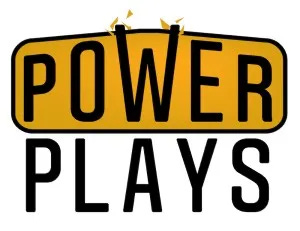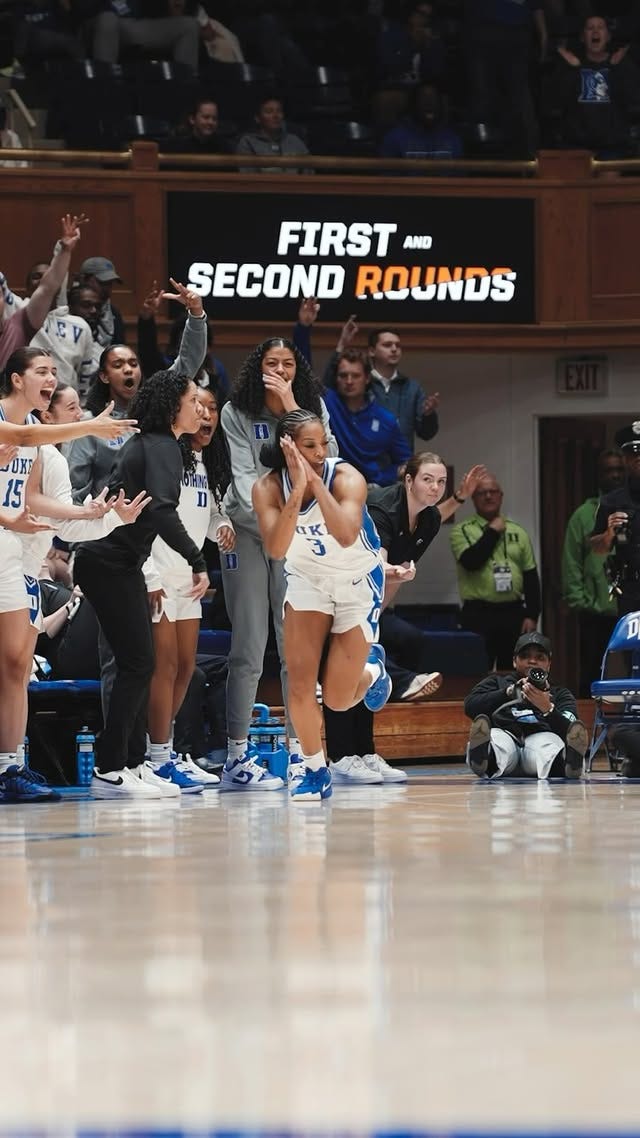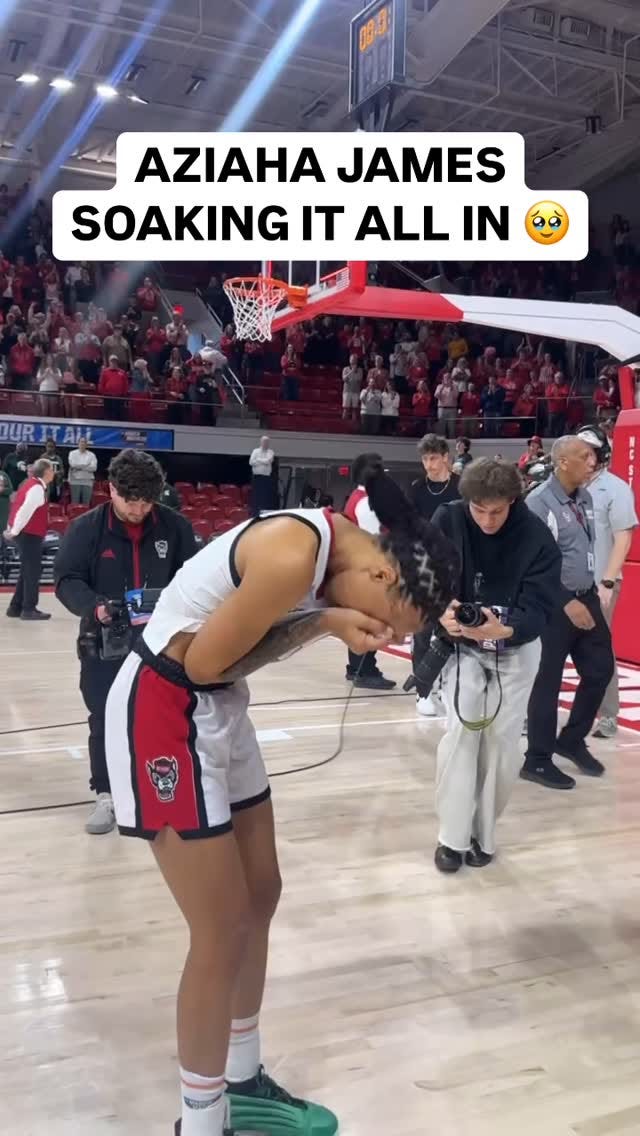The state of madness
The past and present of women's basketball runs through North Carolina. Especially this month.
CHAPEL HILL, NC. — Late in the third quarter of the second-round NCAA women’s basketball tournament game between No. 3 North Carolina and No. 6 West Virginia, the air in Carmichael Arena was thick with tension. West Virginia had gone on an 8-0 run, and North Carolina trailed 35-33.
Scanning faces in the stands, you could see doubt start to creep into the equation. But it didn’t last for long.
Over the next five minutes, North Carolina went on a 16-3 run fueled by nine points by senior stalwart Alyssa Ustby. In one 31-second stretch, Ustby drew three fouls, made two free throws, got a block, and scored on a fast-break layup to give the Tar Heels their first double-digit lead of the game, 49-38. Seconds later, when West Virginia head coach Mark Kellogg called a timeout, the usually tightly-composed Courtney Banghart raced onto the court, stomped her feet, and screamed with joy as the crowd of 4,271 fans roared and the DJ blasted Icona Pop’s infectious anthem, “I love it.”
The game wasn’t officially over for an other seven minutes and 50 seconds, but Banghart confirmed to me in press that in that moment, she knew her team was advancing.
“Obviously with the time and score and how well we were defending as the lead was extended, I just didn't think they were all of a sudden going to score a ton of points on us,” she said.
“We love these guys, I wanted it so bad for them, and I wanted it so bad for the community that wanted us to host and helped us get there. … I try to keep focused on what needs to happen next, but in that moment, I was just overjoyed for them.”
That victory put an exclamation mark on an absolutely ridiculous, inspiring, and exhausting five days of women’s college basketball in central North Carolina, which featured 17 teams playing 10 NCAA women’s tournament games in a 25-mile radius on the campuses of the University of North Carolina, Duke, and N.C. State in Chapel Hill, Durham, and Raleigh, North Carolina, a region known locally as the Triangle.
For the first time since 2007 and only the third time ever, all three schools in the Triangle advanced to the Sweet 16. At least one team will make it to the Elite Eight, because Duke and North Carolina are scheduled to meet on Friday (this afternoon!) at 2:30pm ET in Birmingham.
I was there in person for most of the weekend’s biggest moments, and I’ll admit: As much as I value professionalism and journalistic ethics and don’t call myself a fan of any one women’s team in particular, I found the entire weekend to be incredibly emotional. I grew up in North Carolina; March Madness, the Duke vs. North Carolina rivalry, Triangle basketball, these were all integral parts of my childhood and adolescence, and massive reasons why I am a sports fan and sports reporter today.
But I only grew up with the men’s game, not the women’s.
I didn’t get to see Charlotte Smith’s championship-winning shot, Chastity Melvin in her prime, or Duke’s historic upset of Tennessee in the 1999 Elite Eight. I didn’t even know these things happened until years, if not decades, later.
And so as I hopped from campus to campus to campus, and watched Ashlon Jackson say night-night to Oregon; Aziaha James bend over, bury her hands in her face, and sob while exiting Reynolds for the last time after an exhilarating 26-point performance in a rout of Michigan State; and Ustsby jump on the scorer’s table and celebrate with her fans after a legacy-defining 21 points, seven rebounds, four steals, and three blocks in her final game in Carmichael Arena, my gratitude and excitement and awe were underscored by a sadness at what I missed out on, almost as if I was mourning the experienced I was deprived of due to the everyday sexism that penetrates every aspect of society.
These mixed emotions made me want to learn more about the history of women’s basketball in my state, so I could better understand the magnitude of the moment. And, of course, I had to take you all on that journey with me.
You can’t tell women’s basketball history without North Carolina
During the ACC tournament, I was lucky enough to host an event at Scuppernog Books in Greensboro, NC with Susan Shackleford, the co-author of “Shattering the Glass: The remarkable history of women’s basketball.”
The book goes back to the very beginning of women’s basketball, when Senda Berenson came across James Naismith’s new game and adapted it for the women she taught at Smith College. This was 1892, and team games were absolutely unheard of for women. But it spread quickly.
“For women, most of whom had never played team sports, basketball was a revelation,” Gundy and Shackleford wrote. “The sport became especially popular among college women, who were already pressing eagerly at the boundaries of conventional womanhood.”
When reading the updated version of the book that was released this year, I was struck by how much of the sport’s history runs directly through central North Carolina, starting from the earliest days. In fact, “Shattering the Glass” has a phenomenal photo of a team of women’s basketball player from 1901 in State Normal College in Greensboro, NC.

State Normal College in Greensboro, NC, would eventually become UNC-Greensboro, drawing a direct line between the five white women in long skirts and long-sleeve sweaters in front of a rickety wooden basket and the team I spent Selection Sunday with.
By the 1930s, historically black colleges and universities (HBCUs) were a thriving hum for women’s basketball. Greensboro was home to one of the best women’s college teams in the country: Bennett College. The Bennett College Belles won five national championships that decade.

In the 1950s, factory teams on the AAU circuit were part of an “elite group of amateur and professional teams that lifted American women’s basketball to new heights in the years just after World War II.” One of the most prominent of those teams? The Hanes Hosiery Girls in Winston Salem, North Carolina, who won three straight AAU national championships early in the decade. (Fun fact? Virgil Yow, Kay Yow’s cousin, was the head coach of the Hanes Hosiery Girls.)
No matter the era, no matter the obstacles, North Carolina women found their way to the to top of the women’s basketball world.
In fact, it happened so much that it began to be a problem.

Since the days of Berenson, there had always been a push-and-pull between those who thought that women and girls should only play basketball for fun, and those who saw the benefit of athletic competition in a team-sport format for everyone. In the 1950s, as the Hanes Hosiery Girls were in their heyday, Shackleford and Gundy wrote that “one of the most dramatic battles” of this culture war unfolded in North Carolina.
This is where I really want to dive into the excerpts, because the devil is truly in the details. (Emphasis, of course, is mine.)
In 1950, a group of coaches made a bid to increase the statewide profile of girls’ basketball, founding a well-publicized private tournament that they dubbed the girls’ high school state championship. The Girls’ Invitational opened to great enthusiasm, and by its second year was outdrawing the boys’ state tournament. But the move also aroused opposition. Drawing on decades of carefully cultivated political contacts, the state’s physical educators struck back. In 1952, the state board of education banned state championships for girls.
The decision touched off a statewide debate over girls’ athletics, in which supporters and opponents wrote letters, lobbied state officials and aired their positions in the press. A public hearing held in 1952 set the battle lines. One of the tournament’s founders, Robert E. “Bob” Lee, stressed the virtues of competitive athletics and called for equal treatment. If it were good or bad for the boys, he argued, “then the same thing applied to the girls.” Physical educators, in contrast, contended that women should not engage in high-level competition. In the end, the latter view won out. By 1954, the state tournament was dead.
Is that not absolutely infuriating? The girls’ basketball tournament was so popular that it was outdrawing the boy’s tournament, and suddenly it had to be shut down.
To make things worse, this stifling of girls’ basketball happened at the exact same time that men’s college basketball was being pushed front and center, becoming the local cultural currency that it was by the time I was in elementary school.
The loss could not have come at a worse time. Even as elimination of the high-profile event left North Carolina girls’ basketball reeling, the state’s growing interest in the men’s college game brought new pressures to bear. The state’s major colleges were in the middle of a bid to lift North Carolina men’s college basketball to the highest level of national competition. Their successes turned the game into a state obsession. The growth proved a boon to high school boys’ basketball. It had the opposite effect on girls’ teams.
As enthusiasm for men’s basketball grew, men’s coaches began to cast the women’s game as interfering with their endeavors. In 1951, at the height of the state tournament battle, one top male college coach publicly “blamed girls’ basketball for causing a lack of interest around North Carolina in boys’ play.” By the 1960s, recalled high school coach Bill Bost, men’s coaches at some high schools were working to nudge women’s teams out of their traditional place in the Friday night spotlight in favor of the boys’ junior varsity.
And, my friends, there you have it. The reason why I missed out on so much women’s basketball goodness growing up was a direct result of policy decisions made decades in the past. It was deliberate.
A monumental March
But, on the other hand, it also took policy decisions and a lot of hard work and direct action to figure out a way for women’s basketball — and women’s sports as a whole — to blossom, survive, and even thrive despite the many obstacles they faced.
After Title IX was enacted in 1972, women’s basketball programs slowly started to grow again in the state, starting in Raleigh in 1975, when N.C. State athletic director Willis Casey hired Kay Yow, who had been a successful women’s coach at Elon College. Yow did so quickly; by her third season, the Wolfpack was the No. 3 team in the nation. She led the program until 2009, when she died of cancer.
Seeing Yow’s success, the University of North Carolina soon began putting some (still limited) resources into its women’s team in the 1980s. Sylvia Hatchell was hired in 1986, and in her 33 years at the helm she took the Tar Heels to fifteen Sweet 16s and won the lone national championship for Triangle women’s basketball in 1994. Duke took a little longer to invest in women’s basketball, but by the end of the 1990s, Gail Goestenkors had built that program into a national contender.
There have been some down years, and as women’s basketball has grown across the country, it has felt at times that the boom left this state behind. Which is why last weekend felt so significant. Wes Moore, Kara Lawson, and Courtney Banghart have carved out impressive, devoted fanbases a space where basketball is still, by default, a man’s game. Just because not everyone sees it, doesn’t mean it’s not happening, and doesn’t mean it doesn’t matter.
North Carolina’s victory on Monday night didn’t just cap off an exciting weekend. It capped off what I believe has been one of the most special months of women’s basketball in the state’s history.
It started with the ACC women’s basketball tournament, which was hosted in my hometown of Greensboro, North Carolina for the 25th time in the last 26 years. Duke, N.C. State, and North Carolina all made it to the semifinals, and then Duke defeated N.C. State 76-62 in the first all-North Carolina ACC championship game since 2013. That same week, UNC-Greensboro won the Southern Conference tournament in Asheville, North Carolina, earning its second trip to the NCAA tournament, and first since 1998; and High Point University, which is just 15 miles from UNCG, won the Big South Conference tournament.
On Selection Sunday, Duke, North Carolina, and N.C. State were all named top-four seeds in the NCAA tournament, meaning they each got a chance to host games in the first two rounds of the NCAA tournament.
But here’s the thing: While the past few weeks have been extra special, women’s basketball in North Carolina has always been the heart of March Madness, even in the 40 years where the NCAA sponsored the women’s tournament but didn’t allow women to use the official term, even when people like me were unaware of its existence.
The first official NCAA women’s basketball tournament was in 1982. Since then, there have been 43 editions of the tournament. Here are some stats I pulled together that I think are notable:
There has never been a women’s NCAA basketball tournament without a team from North Carolina. There are only two years when Duke, UNC, and N.C. State all failed to make the tournament field: 1988 and 2016. It turns out, 1988 was one of only two years that Wake Forest qualified for the women’s tournament. In 2016, two smaller schools in the state — UNC Asheville and North Carolina A&T — both made the field.
In 33 of the 43 tournaments, at least two out of the three Triangle schools made the tournament. All three qualified in 15 years.
There has been at least one Triangle team in the Sweet 16 in 34 NCAA women’s tournaments; at least two Triangle teams in the Sweet 16 in 16 tournaments; and, as I mentioned at the top, all three teams advanced to the Sweet 16 three times, including this year.
In 17 seasons at least one Triangle team made the Elite Eight; in three seasons at least two Triangle teams were in the Elite Eight; and in 1998 all three teams made the Elite Eight.
In 2006 both UNC and Duke made it to the Final Four.
Duke has made 19 Sweet 16s, 11 Elite Eights, four Final Fours, and two championship games.
North Carolina has made 19 Sweet 16s, seven Elite Eights, three Final Fours, and won one national championship in 1994.
N.C. State has made it to 17 Sweet 16s, three Elite Eights, and two Final Fours.
But I think the most impressive statistic is that there has been a game hosted in the state of North Carolina in 39 out of 42 NCAA women’s basketball tournaments. (Excluding the 2021 tournament which was held in a single site in San Antonio due to covid; N.C. State was a No. 1 seed and would have hosted if not for the pandemic.)
“I think in my lifetime, Tobacco Road has always been the kind of epicenter of college basketball. I've grown up kind of knowing that this is what it's like down here,” Oregon head coach Kelly Graves said last week in Durham.
“I think really neat. I mean really neat. And it just goes to show you how strong women's basketball is in this area. To have three elite teams hosting like this. I can just imagine how those rivalries play out each and every year. Incredible.”
It certainly was incredible last weekend, when I drove about 600 miles back and forth between Greensboro and the Triangle to see each team reach the Sweet 16 in person. It will be incredible this afternoon when the Duke vs. North Carolina rivalry makes its women’s NCAA tournament debut, and one of the teams will make its first Elite Eight in over a decade. And it will be incredible tonight when N.C. State faces LSU for the chance to make its third Elite Eight in the last four years.
I’m still mad about all the epic women’s basketball I missed out on growing up. I’m still frustrated that local media isn’t talking even more about women’s basketball, and that every game last weekend wasn’t a sell-out. There’s so much more work to do. But mostly, I’m just so excited to be paying attention now.






Loved this piece as a Carolina fan. They've come a long way since Coach Banghart was hired. So happy to see them hosting again. Basketball is more fun when all 3 triangle teams are good.
I've purchased the updated edition of Shattering Glass but haven't started it yet. Going to have to change that.